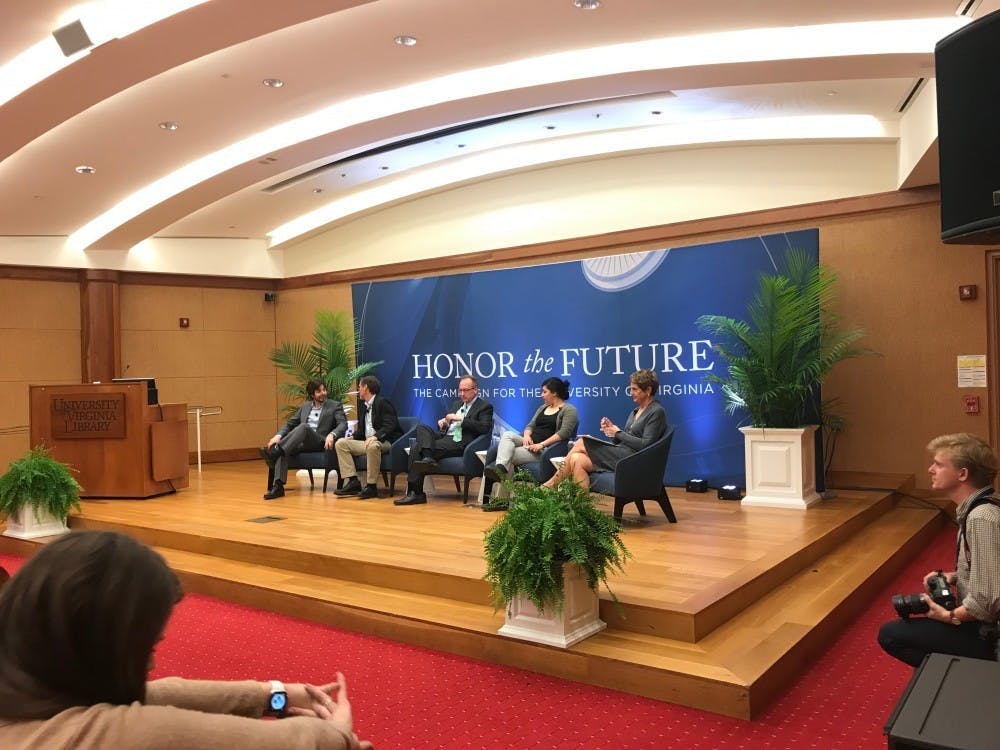University President Jim Ryan announced last weekend that the University raised $2.75 billion of its $5 billion goal for its “Honor the Future” campaign which is currently in its public phase. The project was created to raise a significant sum from donors in order to make the University “the leading” public institution in the United States. While it is certainly impressive that so much money has been raised, the entire process begs the question — what does being the best public university in the nation really mean?
Many have taken these references to the “best” public university to mean a rise in the U.S. News and World Report rankings. This goal in itself is problematic, because rising to the top of these rankings often means reinforcing policies that result in inequality and disincentivizing schools to pursue programs that promote social mobility. Unfortunately, the University has already followed this path somewhat by being listed on the U.S. News and World Report rankings as one of the top 10 state schools with the most expensive in-state tuition in 2016.
Furthermore, it should come as no surprise that as we chase donor dollars to fulfill these goals, we end up subconsciously chasing donors' personal motives. According to Derrick Wang, a fourth-year College student and the student Board of Visitors member, one of the features of this campaign is that donors get to choose where their contributions go. While this may seem like a sound fundraising strategy, in reality it gives far too much control to the contributors who attach specificities to their gifts and at many schools results in less than a fifth of donor contributions being dedicated to financial aid.
The highly publicized $100 million dollar gift from David and Jane Walentas to establish a scholarship fund for first-generation students is a perfect encapsulation of this phenomenon. Even though Ryan stated that this contribution would be the “cornerstone” of his campaign, it only accounts for 2 percent of the total $5 billion dollar goal, meaning a great portion of the donations U.Va. is recieving have nothing to do with helping to increase the income diversity of the University. Furthermore, this scholarship will apply to 60 Walentes fellows, which would be a tiny percentage of the most recent University class size — many of whom likely come from families in the top 20 percent.
In accordance to the conditions of the gift, this scholarship not only applies to first generation students in Virginia, but in the donor’s hometown of Rochester, N.Y. and New York City. So, while the contribution has been rightfully lauded and will likely help many underprivileged individuals to attend U.Va., raising significant sums through contributions comes with a set of constraints, which means they are far from the systemic change that the University needs to become truly equitable.
Given all of these issues, it is hard to dispel the notion that the University’s goal of raising its college ranking is in conflict with the mission of making it a more equitable and representative institution. It is hard to reconcile the amount of resources being donated to the University with the school's refusal to lower its sky high tuition and difficulties increasing its low percentage of students who receive pell grants. Additionally, it is important to recognize the paradox of Ryan being able to raise close to a third of our endowment in such a short amount of time with U.Va. being the largest employer in Charlottesville — which has a 24.5 percent poverty rate.
If we were serious about becoming the best public school in the nation, there are so many other things we could be dedicating resources toward. We could be thinking about rising to the top of different rankings that we are not in the top ten of, like the list of best schools for social mobility. U.Va. could also create a debt-free college program for many low-income students like the University of North Carolina, Chapel Hill — a policy U.Va. backed away from a few years ago — instead of the surface level changes to our current financial aid policy, while also reducing tuition for everyone. We could go test optional, like the University of Chicago, because what success on the SAT correlates the most with is family income. We could also contribute our fair share of taxes to the city to help them deal with an affordable housing crisis that our community is in part to blame for instigating.
While these actions seem idealistic, so is Ryan's $5 billion fundraising goal. What the Honor the Future campaign has shown me more than anything is that the ability to solve all of these problems exists — we just lack the will to act on them to the fullest extent. If the University wants to become the best public university it must look beyond rankings and dramatically re-evaluate its priorities.
Jacob Asch is the Executive Editor of The Cavalier Daily. He can be reached at j.asch@cavalierdaily.com.







